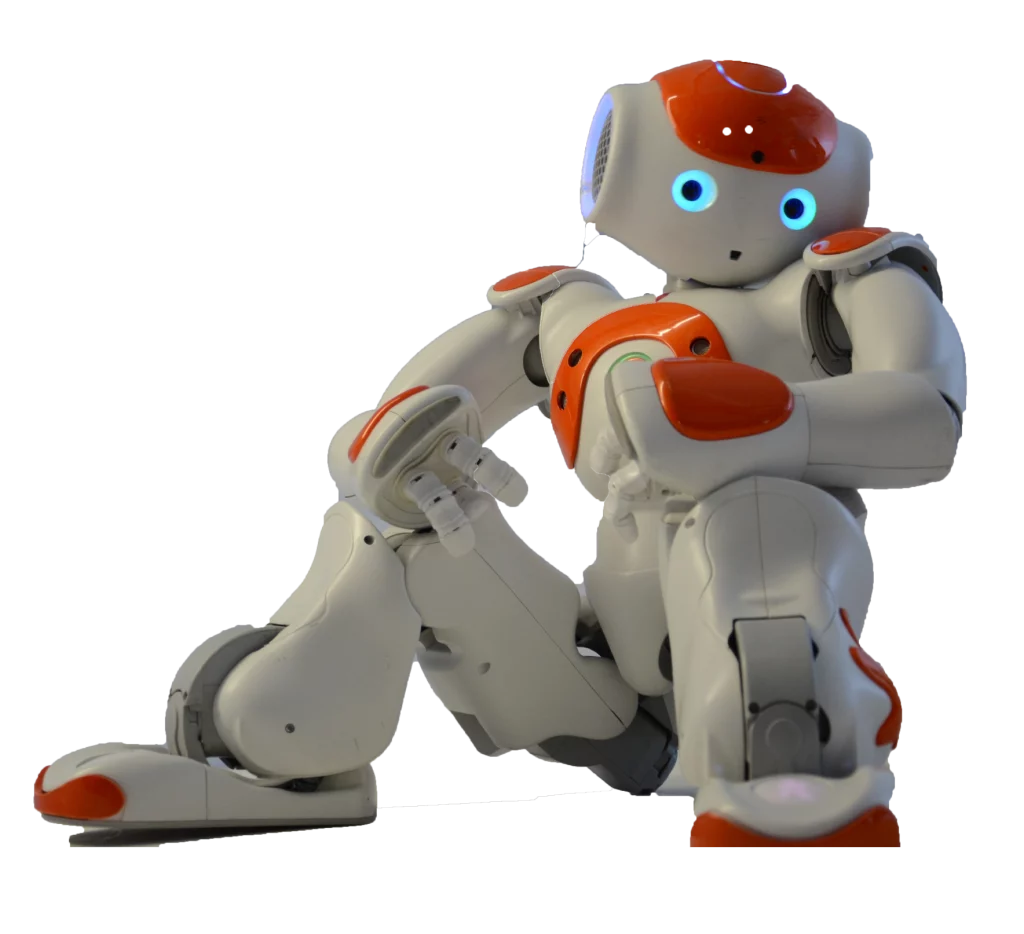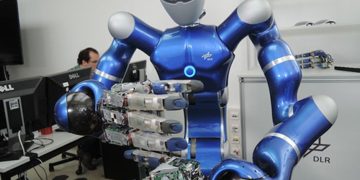Introduction
The landscape of domestic life is undergoing a transformation as robots begin to enter our homes, becoming indispensable companions in managing household chores and personal tasks. Household robotics, which were once limited to science fiction, have now become a reality, offering practical and affordable solutions for modern living. Whether it’s cleaning, cooking, or providing companionship, robots are improving the quality of life by enhancing convenience, efficiency, and safety. This article explores how domestic robots are reshaping daily life, the advantages they bring, and the potential challenges they introduce.
1. The Evolution of Domestic Robots
Domestic robots have come a long way since their inception. In the past few decades, technological advances in artificial intelligence (AI), machine learning, and robotics have enabled the creation of robots that can perform a variety of tasks autonomously. Early attempts at domestic robots were limited to rudimentary machines that lacked flexibility and intelligence. However, with the advent of smart sensors, computer vision, and powerful processors, robots today are much more capable and versatile.
1.1. Early Beginnings: From Novelty to Practicality
The first commercial robots were relatively simple, like the Roomba robotic vacuum cleaner, which debuted in 2002. At the time, it was more of a novelty than a necessity. However, as technology progressed, the Roomba’s successors began to incorporate better navigation, advanced sensors, and machine learning algorithms, allowing for more efficient cleaning routines. Today, robotic vacuum cleaners are a common household item, and their capabilities continue to improve.
1.2. The Rise of AI-Driven Domestic Robots
AI and machine learning have propelled the development of smarter household robots. These robots are capable of understanding their environment, adapting to new tasks, and making decisions based on real-time data. For example, robotic lawnmowers use GPS and sensors to navigate your yard, and they can even return to their charging stations when they need a recharge. Similarly, cooking robots can understand recipes and adjust their methods based on available ingredients.
2. Applications in Everyday Life
Domestic robots are no longer just a luxury—they’re becoming integral to modern living. Their applications span a wide range of activities, making our daily routines more efficient, freeing up time for leisure, and improving our quality of life. Here are some key areas where robots are making an impact:
2.1. Cleaning Robots
Robotic vacuum cleaners like the Roomba and its competitors have revolutionized the way we approach home cleaning. These robots are equipped with advanced sensors and AI algorithms that allow them to navigate rooms, avoid obstacles, and efficiently clean floors without human intervention. Some models can even be controlled via smartphone apps, allowing users to schedule cleaning sessions remotely.
In addition to vacuum cleaners, robots that clean windows, pools, and floors are becoming increasingly popular. For example, robotic window washers can clean high-rise buildings with minimal human supervision, reducing labor costs and improving safety for workers. These innovations reduce the physical effort required for routine maintenance and keep homes cleaner, more organized, and more comfortable.
2.2. Personal Assistants
In the realm of smart home devices, robotic assistants are gaining traction. These robots, such as smart speakers and AI-driven personal assistants like Amazon’s Alexa, Google Assistant, and Apple’s Siri, are increasingly integrated into household systems. These robots can manage various tasks, including controlling smart home appliances, playing music, setting reminders, providing weather updates, and even managing calendars and emails.
More advanced robots are emerging with the ability to interact socially. For example, companion robots like Pepper by SoftBank can carry out basic conversations, recognize emotions, and provide entertainment. In households with elderly or disabled members, these robots offer companionship and can even alert caregivers in case of emergencies.
2.3. Food Preparation and Delivery
Food preparation is another area where robots are beginning to play a larger role. Robotic kitchen assistants can perform tasks like chopping vegetables, stirring pots, and even cooking complete meals. Companies like Moley Robotics are working on fully automated kitchen systems, which include robotic arms that mimic the actions of a chef. These systems can follow recipes, and their precision ensures consistent cooking quality every time.
Additionally, food delivery robots are beginning to take over local deliveries. These small autonomous robots can carry food from restaurants to customers’ homes, navigating sidewalks and even crossing streets. Delivery robots like those created by Starship Technologies are already operating in some urban areas, offering a contactless and environmentally friendly alternative to traditional delivery services.

3. Impact on Daily Life
The integration of robots into everyday life offers numerous benefits, including increased convenience, enhanced efficiency, and improved accessibility. Here are some of the ways domestic robots are transforming households:
3.1. Increased Efficiency and Time Savings
Perhaps the most significant benefit of household robots is the time they save. Tasks that once took up valuable time, such as cleaning, cooking, and organizing, can now be handled by robots. This allows individuals to focus on more meaningful activities, such as spending time with family or pursuing hobbies. For working parents, robots can be a godsend, providing much-needed assistance with household chores and reducing the mental load associated with domestic management.
3.2. Enhanced Safety and Comfort
Robots can also improve safety and comfort at home. Elderly individuals, in particular, benefit from robots that assist with mobility, monitor their health, and offer companionship. Robots designed to help with medication reminders or mobility aids can prevent accidents and ensure that individuals are adhering to their care schedules. This technology reduces the risk of falls and accidents and promotes a higher quality of life for those with limited physical capabilities.
3.3. Better Environmental Impact
Some domestic robots, such as robotic vacuum cleaners, also contribute to environmental sustainability. By automating tasks like floor cleaning, robots can help reduce the need for harsh chemical cleaners. Additionally, robots like lawnmowers and pool cleaners are designed to be energy-efficient, requiring minimal power and reducing their carbon footprint compared to traditional methods.
4. Challenges and Concerns
While domestic robots offer a host of benefits, they also present several challenges that must be addressed. These concerns range from cost and privacy issues to the potential impact on employment and human relationships.
4.1. High Initial Costs
One of the main barriers to widespread adoption of domestic robots is their high initial cost. While robotic vacuum cleaners have become more affordable in recent years, many other domestic robots, such as robotic lawnmowers or automated kitchen assistants, remain expensive. As with any new technology, prices tend to fall over time, but the upfront cost can be a significant deterrent for many consumers.
4.2. Privacy and Security Concerns
Many domestic robots are equipped with cameras and sensors that collect data to help them navigate and interact with their environment. While this makes robots more efficient, it raises concerns about privacy and data security. For instance, home surveillance robots may inadvertently capture personal information or sensitive footage. Manufacturers must ensure that their robots adhere to strict privacy guidelines and offer robust security features to protect users’ data.
4.3. Dependence on Technology
As robots become more integrated into our daily lives, there is a growing concern about dependency. People may begin to rely too heavily on robots to perform tasks, leading to a reduction in self-sufficiency. For example, children or elderly people who rely on robots for companionship and care may find it difficult to cope without them in the future.
5. The Future of Domestic Robots
The future of household robotics looks bright, with continuous advancements in AI, machine learning, and robotics hardware. As robots become more intelligent and adaptable, they will be able to handle an even broader range of tasks, including personalized caregiving, home maintenance, and entertainment. The integration of robots into smart homes will further enhance the convenience and efficiency of everyday life.
5.1. More Intelligent and Autonomous Systems
Future domestic robots will be capable of even greater autonomy, using advanced AI algorithms to make decisions and perform tasks independently. For example, robots may be able to learn household routines and predict when cleaning, cooking, or maintenance tasks should be performed. They could even anticipate the needs of family members, adjusting their behavior accordingly.
5.2. Integration with Smart Homes
The future of domestic robots is closely linked to the development of smart homes. Robots will become part of an interconnected system, where they will work seamlessly with other smart devices like thermostats, lights, and security systems. This integration will create a more efficient, automated home that adjusts to the preferences and needs of its occupants.
5.3. Increased Accessibility and Affordability
As technology advances and manufacturing costs decrease, household robots will become more affordable and accessible to a broader range of consumers. Robots that were once considered luxury items will become commonplace, helping to alleviate the workload of busy families, elderly individuals, and people with disabilities.
Conclusion
Domestic robots are transforming the way we live, offering convenience, efficiency, and safety while reshaping traditional domestic roles. As technology continues to advance, the capabilities of household robots will expand, making them an even more integral part of our daily lives. While challenges such as cost and privacy remain, the benefits they offer are undeniable. The future of domestic robots promises a world where our homes are smarter, more efficient, and more connected, ultimately enhancing our quality of life and freeing up time for the things that matter most.












































